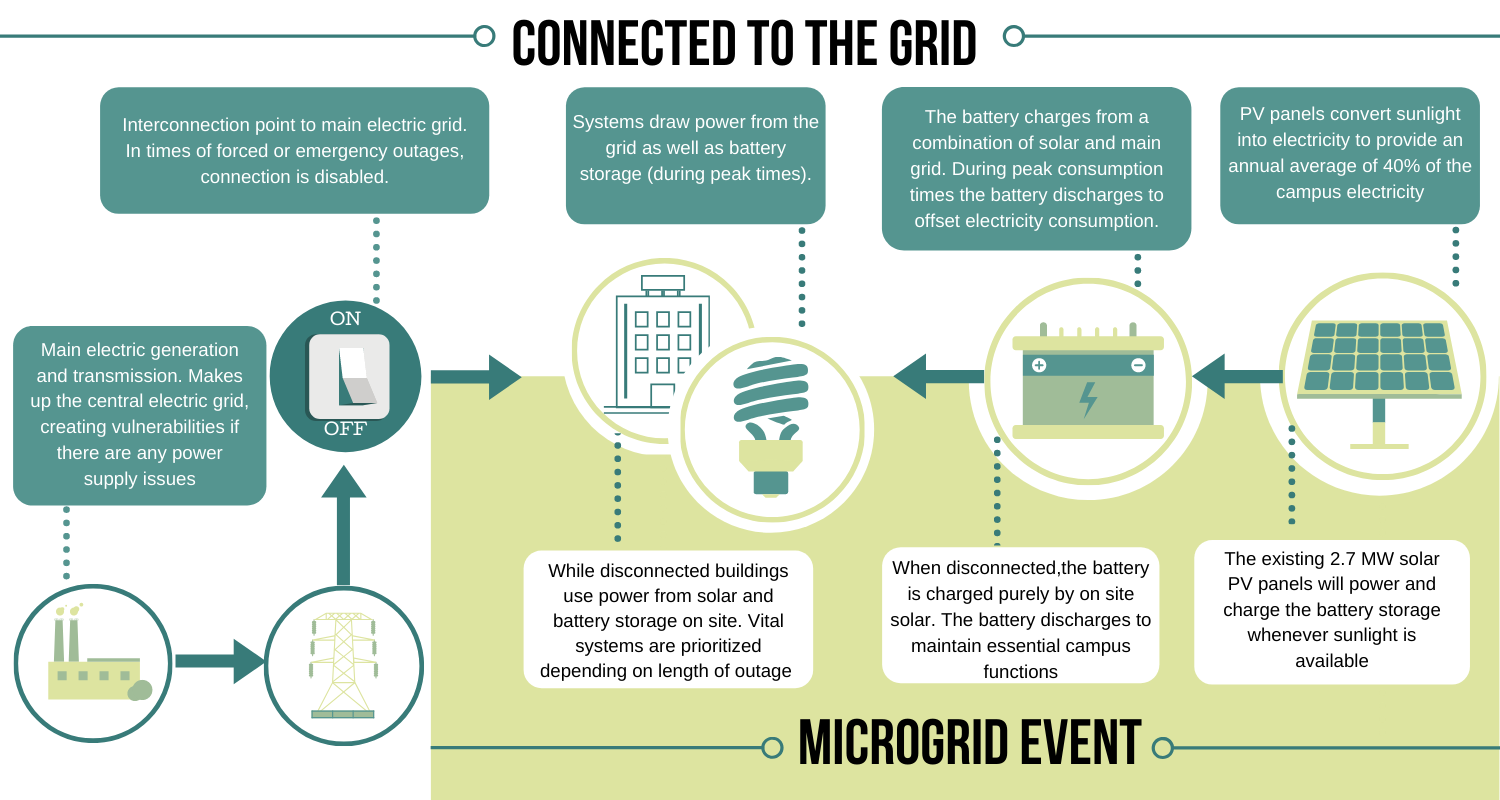PROJECT NARRATIVE
The SRJC Microgrid Project is a micro-grid demonstration project at the 100+ acre Santa Rosa Junior College campus in Santa Rosa, California. The project will integrate multiple Distributed Energy Resource elements including photo-voltaic (PV) generation, electrical energy storage, load reduction devices, and load control systems, all managed by a single micro-grid controller. Realization of this project will lead to technological advancement and innovation, optimizing generation and load flexibility, enhancing power quality of the surrounding grid using renewable resources, creating disaster-tolerant power resources for SRJC and its community, and opening new value stream capabilities for the Sonoma County Junior College District.
PROJECT GOALS
|
1 |
Meet 40% of campus electricity with emissions-free PV solar power |
|
2 |
Reduce the campus' peak load |
|
3 |
Demonstrate the environmental, economic, and resiliency benefits of a highly flexible campus micro-grid |
|
4 |
Provide support services to the surrounding grid |
|
5 |
Create a highly resilient power system benefiting the campus and the community |
|
6 |
Optimize energy use |
ABOUT THE SITE

The selected site for the proposed micro-grid demonstration project is the 100+ acre Santa Rosa Junior College Campus in Santa Rosa, California, located within Pacific Gas and Electric's (PG&E) service territory. SRJC is part of the Sonoma County Junior College District, one of the largest single college districts in the United States. The potential value of this critical emergency services role was demonstrated during the devastating wildfires that impacted northern California and specifically Santa Rosa in October of 2017. Approximately 395,000 customers lost power, and its destructive power was felt within a mile of the SRJC campus, the selected site for the proposed micro-grid demonstration projects. Over 50 of SRJC's faculty and over 300 students lost their homes, joining the hundreds of residents requiring emergency shelter and services. The campus experienced electrical power outages during the critical first few days of these fires, crippling its ability to provide emergency services to the community. California's vulnerability to other extreme natural events, such as extreme storm events, coastal flooding, and earthquakes, combined with new national security threats to power infrastructure, make the need for a micro-grid approach to power distribution all the more acute.





